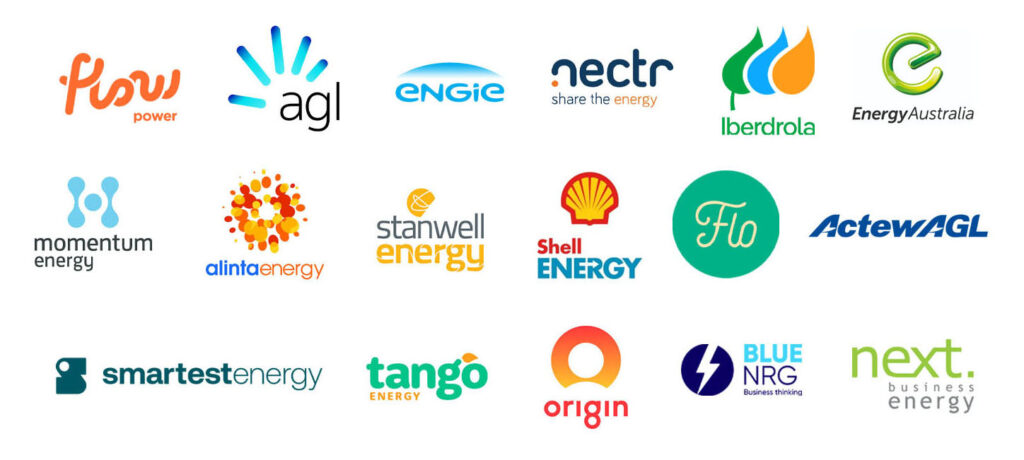Climate and weather affect electricity prices because they both directly influence the demand and supply of energy.
Imbalances in the demand and supply of electricity cause fluctuations in wholesale futures prices.
Weather can cause drastic price fluctuations in the short term, while climate causes cyclical fluctuations over the medium term.
Climate change is also forcing itself into the picture and could have extreme consequences on energy demand and supply in the long term future.
Before diving into the specifics of how the climate and weather affect electricity prices, it is important to understand the nuanced differences between weather, climate, and climate change.
The weather

Weather can be described as a mix of events that happen every day in the Earth’s atmosphere. Weather is what we experience day to day.
These events are all controlled by changes in air pressure leading to sunny, windy, or rainy days.
Typically, when air pressure is high, skies are blue and clear and when it is low, clouds form with the potential for rain.
Extreme high pressure can lead to scorching hot temperatures while extreme low pressure can create extreme storms.
The climate
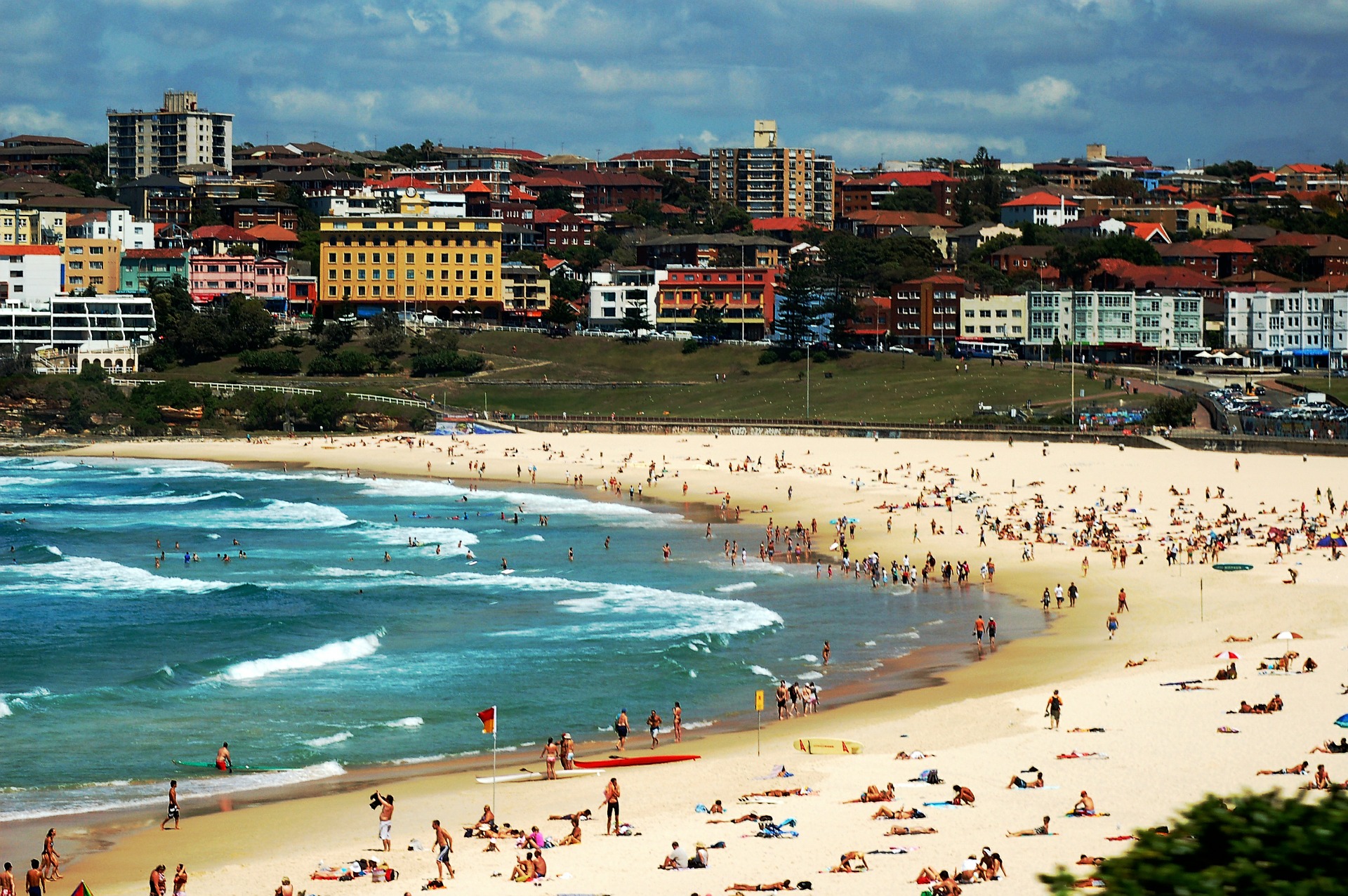
Climate can be described as the weather averaged over a long period of time. Most scales use a 30 year time period.
Simply put, the climate is what you expect of a place and weather is what you actually get on any given day.
Variables in climate include temperature, precipitation, wind, and extreme weather events. The climate is influenced by latitude, altitude, the proportion of land to water, and proximity to oceans and mountains.
A country like Australia is so large that different states have different climates. The Northern Territory, for example, is tropical while Tasmania is temperate.
Understanding weather patterns
Weather patterns are usually tied to the four seasons: summer, winter, spring, and autumn.
As mentioned earlier, Australia’s landmass is so large that weather patterns differ state by state. Weather patterns include:
Hot and dry weather
During summer and spring, the weather pattern is commonly hot and dry.
Tropical weather
Parts of the country lie in the tropics, meaning that they get temperate temperatures in winter and monsoon-like rain and humidity in summer.
Cold weather
The most susceptible parts of the country for cold weather are Victoria and Tasmania in the winter as well as inland rural New South Wales.
Windy Weather
Australia’s southern coast experiences the most wind. This is why wind generation power is concentrated in Victoria, parts of Western Australia, South Australia, and Tasmania.
Rainy Weather
Rainy weather patterns are exactly what they say on the label. It means wet weather. Different parts of the country experience rainfall at different times of the year. Generally, rainy weather is experienced in winter, though the tropics get it in summer.
Extreme/severe weather patterns
Australia’s severe weather season runs from October to April and typically features a mix of heavy rain, thunderstorms, heat waves, bushfires, and tropical cyclones.
Predictable vs Unpredictable weather patterns
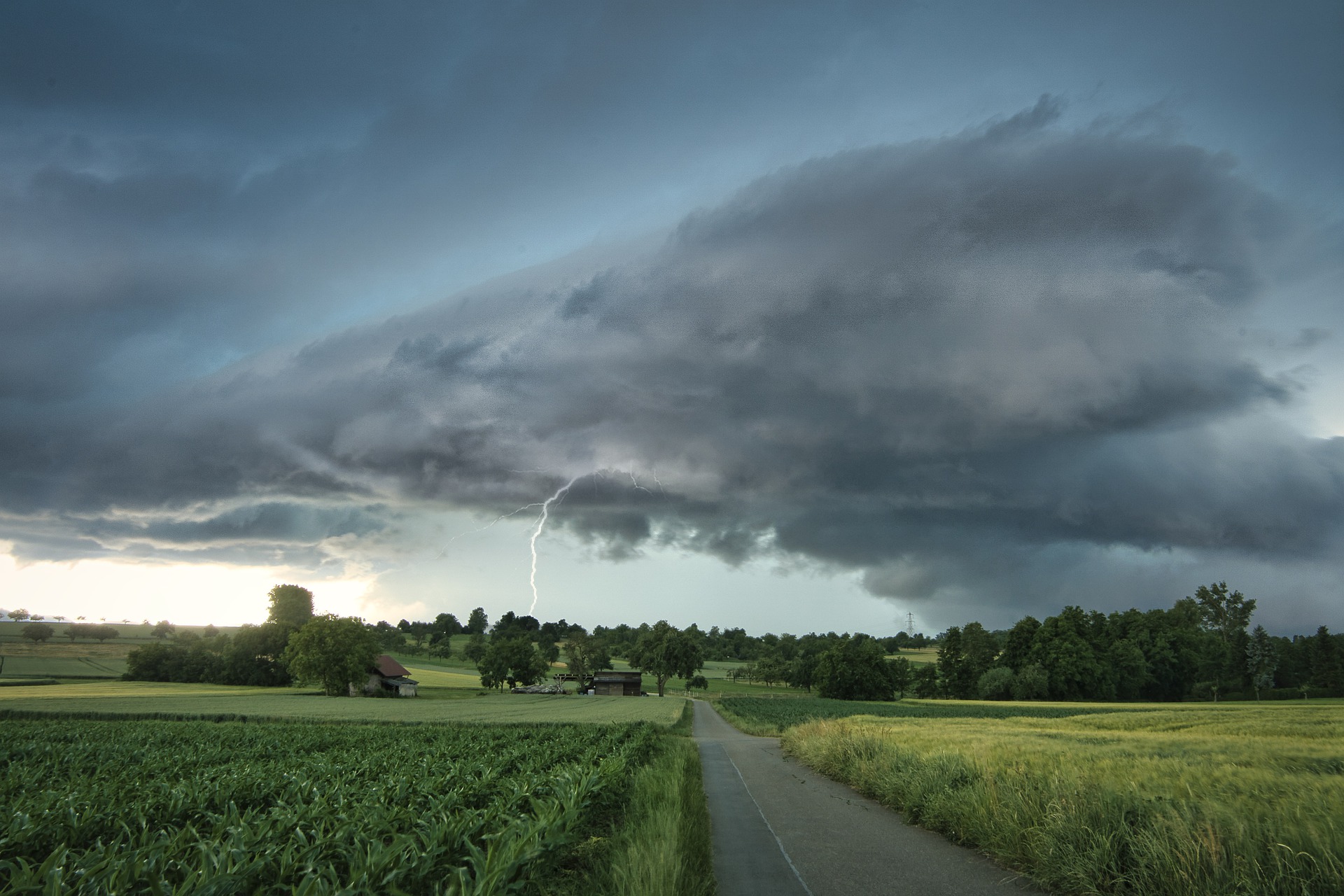
Predictable weather patterns can be made with between 80-90 percent accuracy over five and seven days respectively.
However, weather patterns become much harder to predict beyond 10 days.
Weather patterns in the Pacific can also turn unpredictable due to overriding factors such as El Niño which can bring heatwaves, bushfires, and drought.
La Niña, on the other hand, brings cooler weather with flash rain and thunderstorms.
How climate patterns affect supply to the grid
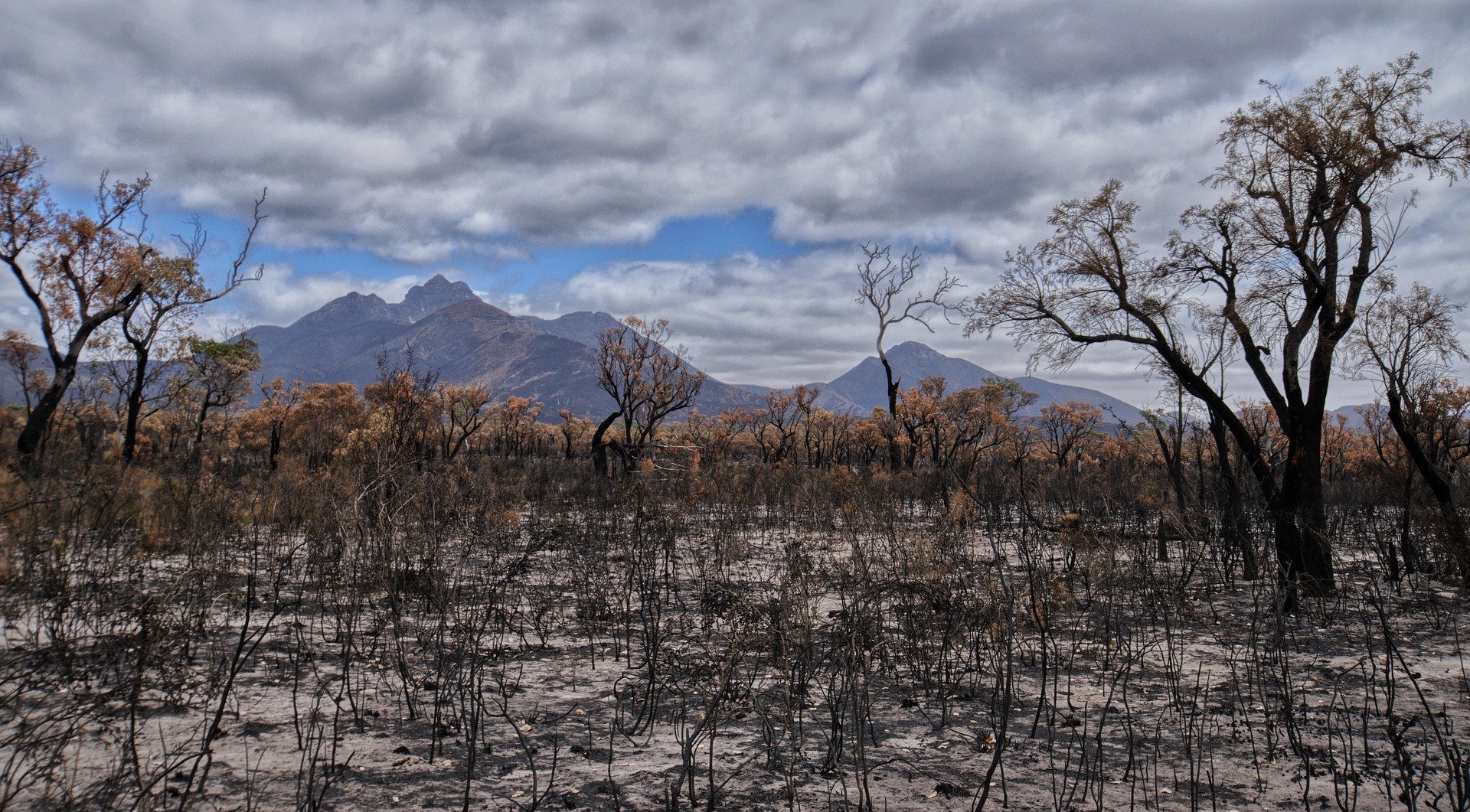
Climate patterns affect supply to the grid in various ways. Solar generation, for example, is more plentiful during the long sunny days in summer and less plentiful in winter when it can be cloudy and rainy.
On the other hand, rain increases the supply of potential energy at Australia’s pumped hydro generators. When rain is plentiful, water can be discharged from reservoirs into turbines when it is needed and pumped back up when energy prices are cheap.
When it is windy, generation from wind farms is plentiful, but conversely, when it is still, generation drops to next to nothing.
Extreme weather can also take its toll on supply. South Australia famously experienced a state-wide blackout in 2016 when extreme winds downed power lines and tripped wind generators.
During the black summer, for example, an interconnector between South Australia and New South Wales had to be shutdown due to safety concerns.
This was a perfect example of how the climate and weather affect electricity prices.
The result was spot prices that shot up to the market cap of $14,700 dollars in NSW. The graph below shows the tremendous jump in spot prices during that day (4 January 2020), compared to the previous and following days.
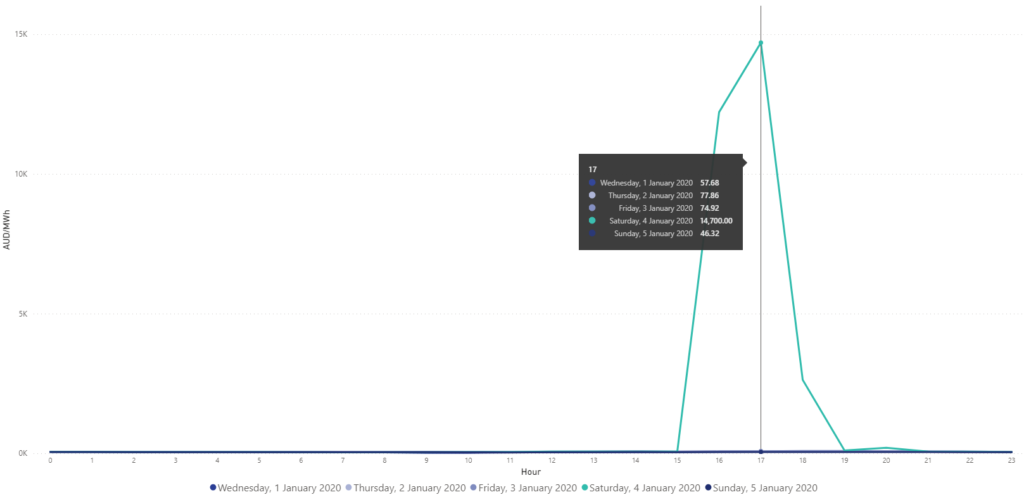
The table below shows how electricity spot prices shot up in Victoria during the flooding of the Yallourn coal mine in June 2021, which caused a serious curtailment to production at Energy Australia’s Yallourn plant.

How climate patterns affect demand on the grid
Climate also affects demand on the energy grid. It’s very simple. When there are extremes of hot and cold weather, demand increases due to the use of air conditioners and heaters in people’s homes, in offices, retail spaces, and entertainment venues.
When it is sunny and warm, residential rooftop solar really does come into its own, causing demand during the daytime to bottom out in what is known as the duck curve phenomenon.
One really cannot underestimate the effect that weather has on the electricity grid.
The consumption of tea in winter in the UK, for example, puts incredible stress on the grid at precisely 7 pm every weekday as 1.75 million viewers put the kettle on at the same time, creating 3,000 MW of extra demand when a popular show finishes.
The climate and weather affect electricity prices – What are you doing to futureproof your energy costs?
Forward purchasing of energy on the wholesale futures market is a great way to lock in supply at a fixed rate for a fixed period of time.
Leading Edge can also go to tender on your behalf even if your current deal hasn’t expired.
Sign up for Leading Edge Energy’s newsletter and we’ll keep you updated with all the latest, most relevant energy news and information for commercial and industrial consumers like yourself.
Want to reduce your business’ electricity or gas costs? Our Energy Experts can guide you with that. Just give us a call at 1300-852-770 or fill out our Get Started form today.
We source, analyse, compare and rank commercial, industrial and multisite energy quotes. Obligation Free.
Chat with one of our experienced consultants today and get the insights your business needs to help manage the risks associated with volatile electricity and natural gas markets. Our energy procurement service is obligation-free and provides a time-saving way of securing lower energy rates from our panel of energy retailers.
